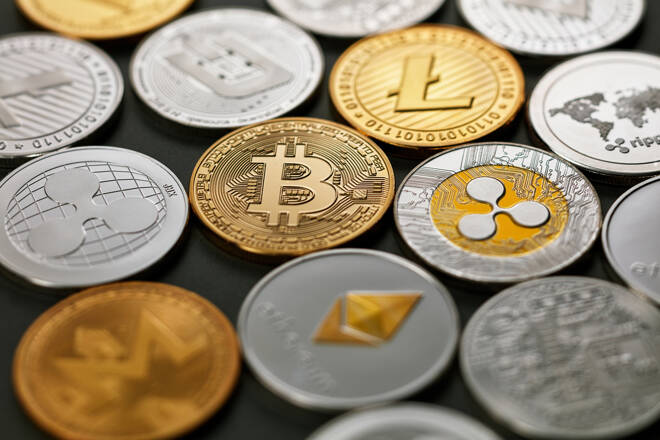Advertisement
Advertisement
Bitcoin (BTC) Inches Its Way to $40,000
By:
While indicators begin to reflect a shift in sentiment, regulators could test support for the crypto majors once the weekend is over.
It was a 3rd consecutive day in the green for Bitcoin (BTC) on Saturday. Following a NASDAQ fueled 1.54% rise on Friday, Bitcoin gained 1.11% to end the Saturday at $38,180.
For the Bitcoin bulls, Bitcoin has risen 6-days out of 7, as the recovery from last Monday’s visit to sub-$33,000 continues.
It was a relatively rangebound day, however, with resistance at $39,000 pegging Bitcoin back from a run at $40,000 on the day.
Solana (SOL) Finds Support Amidst Fresh Outage News
Elsewhere, Ethereum (ETH) continued to find strong support, rising by 2.23% as it makes its way back to $3,000. Solana (SOL) led the way, however, rallying by 5.29%.
Touted to be the next big thing in crypto, outages have weighed on Solana amidst the latest crypto market correction. Market volatility was attributed to the latest downtime, which is a bad combination for crypto traders. Outages at times of market stress leave traders exposed, which can lead to significant losses.
Last week we had looked at Solana and market reaction to a 3rd distributed denial-of-service (DDoS) attack in less than 6-months. A reported 48-hour outage had left users with forced liquidations and heavy losses. Year-to-date, Solana was down 43.4% to Saturday’s $96.16 close. As Solana and the broader market continue to recover from the January floor, another outage would likely bring January’s low $80.79 and sub-$80 into play. Solana last sat at sub-$80 back in August, on its run to a November ATH $259.95.
The Bitcoin Fear & Greed Index
A 3rd consecutive day in the green for Bitcoin delivered further upside for the Bitcoin Fear & Greed Index. Continuing its recovery from a 23rd January 11/100, the Index increased from 24/100 to 29/100 on Saturday. Hitting its highest level since 3rd January, the latest upward trend could present a buying opportunity. A move out of the red zone to 30/100 will be a key move.
The index currently does sits in the red, however, reflecting the market’s bearish sentiment. A move back through to 30/100 and into the orange would reflect a shift in sentiment and a buying opportunity. On 28th December, the Index had stood at 41/00, which was the last time the Index had been out of the red zone.
Bitcoin Price Action
At the time of writing, Bitcoin was down by 0.89% to $37,840. A move through the day’s $38,142 pivot would support a run at Saturday’s high $38,898 and the first major resistance level at $38,936.
An extended crypto rally, however, would bring $40,000 levels into play for the first time since 21st January. Bitcoin would need to break through the second major resistance level at $39,692, however.
Failure to move through the day’s pivot would bring the first major support level at $37,386 into play. Barring an extended sell-off on the day, Bitcoin should avoid sub-$37,000 and the second major support level at $36,592.
Looking at the EMAs, the signal has become less bearish. Bitcoin continues to hold above the 50-day EMA, which has narrowed on the 100-day EMA. A continued narrowing would support a move back through to $39,000 levels. At the time of writing, the 100-day EMA stood at $38,981.
Market sentiment towards imminent crypto oversight, however, will likely remain a test for Bitcoin and the majors. Regulatory chatter and activity have been on the silent side over the weekend. This is unlikely to be the case in the week ahead.
About the Author
Bob Masonauthor
With over 28 years of experience in the financial industry, Bob has worked with various global rating agencies and multinational banks. Currently he is covering currencies, commodities, alternative asset classes and global equities, focusing mostly on European and Asian markets.
Advertisement
